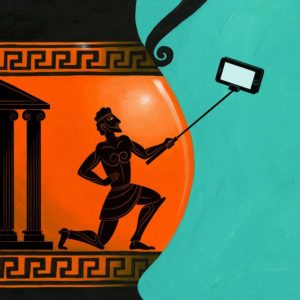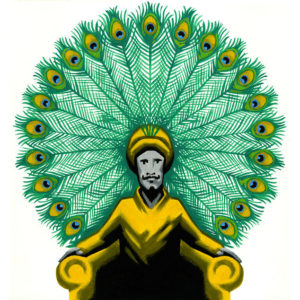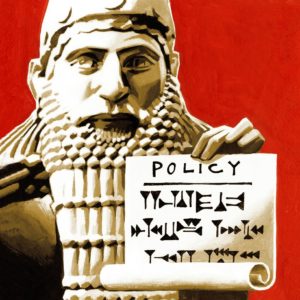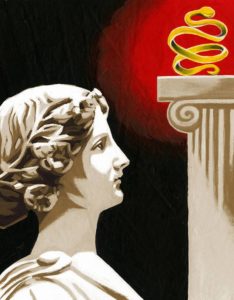Once a privilege of the elite, summer travel is now a pleasure millions can enjoy.
The Wall Street Journal, June 6, 2019

ILLUSTRATION: THOMAS FUCHS
The importance of vacations for health and happiness has been accepted for thousands of years. The ancient Greeks probably didn’t invent the vacation, but they perfected the idea of the tourist destination by providing quality amenities at festivals, religious sites and thermal springs. A cultured person went places. According to the “Crito,” one of Plato’s dialogues, Socrates’ stay-at-home mentality made him an exception: “You never made any other journey, as other people do, and you had no wish to know any other city.”
The Romans took a different approach. Instead of touring foreign cities, the wealthy preferred to vacation together in resort towns such as Pompeii, where they built ostentatious villas featuring grand areas for entertaining. The Emperor Nero was relaxing at his beach palace at Antium, modern Anzio, when the Great Fire of Rome broke out in the year 64.
The closest thing to a vacation that medieval Europeans could enjoy was undertaking pilgrimages to holy sites. Santiago de Compostela in northern Spain, where St. James was believed to be buried, was a favorite destination, second only to Rome in popularity. As Geoffrey Chaucer’s bawdy “Canterbury Tales” shows, a pilgrimage provided all sorts of opportunities for mingling and carousing, not unlike a modern cruise ship.
The vacation went upmarket in the late 17th century, as European aristocrats rediscovered the classical idea of tourism for pleasure. Broadening one’s horizons via the Grand Tour—a sightseeing trip through the major classical and Renaissance sites of France and Italy—became de rigueur for any gentleman. The spa town, too, enjoyed a spectacular revival. The sick and infertile would gather to “take the cure,” bathing in or drinking from a thermal spring. Bath in England became as renowned for its party scene as for its waters. Jane Austen, a frequent visitor to the city, set two of her novels there. The U.S. wasn’t far behind, with Saratoga Springs, N.Y., known as the “Queen of Spas,” becoming a popular resort in 1815.
But where was the average American to go? Resorts, with their boardwalks, grand hotels and amusement arcades, were expensive. In any case, the idea of vacations for pure pleasure sat uneasily with most religious leaders. The answer lay in the great outdoors, which were deemed to be good for the health and improving to the mind.
Cheap rail travel, and popular guidebooks such as William H.H. Murray’s “Adventures in the Wilderness; or, Camp-Life in the Adirondacks,” helped to entice the middle classes out of the city. The American Chautauqua movement, originally a New York-based initiative aimed at improving adult education, further served to democratize the summer vacation by providing cheap accommodation and wholesome entertainment for families.
The summer vacation was ready to become a national tradition. In 1910, President William Howard Taft even proposed to Congress that all workers should be entitled to two to three months of paid vacation. But the plan stalled, and it was left to France to pass the first guaranteed-vacation law, in 1919. Since then, most developed countries have recognized vacation time as a legal right. It’s not too late, America, to try again.














